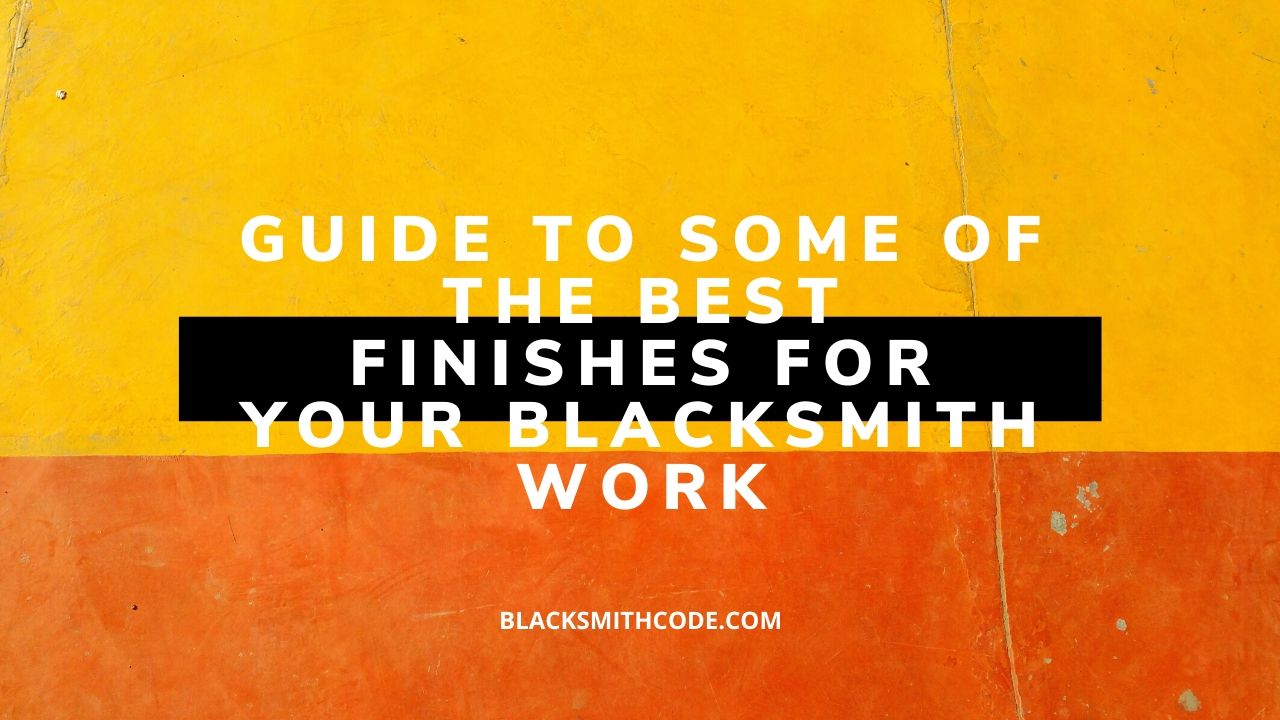The marketability of blacksmithing work is highly dependent on the quality and neatness of your work. And one of the significant factors that can contribute to the tidiness of your work is the finishes you give to it. Excellent blacksmith finishes add the essential appealing outlook to your work, therefore improving its market value and its visual presentation.
Finishes are usually the final process of blacksmithing work. It typically comes after hardening and tempering. Tempering and hardening your steel will prevent your forged product from being brittle and also makes it durable.
There are several options for finishes that you can give to your work once you are through with your blacksmithing work. Most times, the choice of finishing is dependent on the project or blade that you are forging. The most important thing is to choose a suitable finishing for your work.
Here are the standard finishes for your blacksmithing work.
Spraying Hot Zinc
this finishing involves the use of a handgun to spray molten zinc on your work. Aside from the fact that it provides a good surface for your work where you can easily paint, it also protects the work and makes it intact for a more extended period.
Hot Dip Rousing
this blacksmith finish is similar to spraying with hot zinc. The significant difference is that the work is dipped into the molten zinc instead of merely spraying it with it. However, dipping leaves a more chemically darkened surface on the job. You can either leave it or paint over it.
Painting
Painting is one of the most common finishes in both blacksmithing work and furniture. It is suitable for almost all ranges of blacksmithing work, including both exterior and interior works. You can grift blast your work before painting to get an even better result. Painting offers a valid protection lifespan for your work, mainly when used on a preceding coating like dipping and spraying with molten zinc.
Electroplating
Electroplating is also a popular finish among blacksmiths. It is, however, a little bit technical because it requires the deposition of copper-zinc or chrome on the surface of the work or project. You can either leave it as plated or paint over it. However, electroplating is restricted to a relatively small task.
Powder coating
Powder coating is highly comparable to painting. It is one of blacksmithing finishes that significantly protects the surfaces of your work from rust.
Coating with oil, wax, or lacquer
this is majorly suitable for interior works. Only a small or thin layer of this quoting is required so as not to mask the colors and beautiful patterns of your work. You might need to periodically reapply wax and oil, accounting for why it is not very suitable for outdoor use.
Conclusion
The finishing you give your work is quite as crucial as the entire process of the work. Although blacksmith finishes vary depending on the type of work, they still offer similar results. They give your work a classy outlook, protect it, as well as bring out the beauty of your work.

